#Letter to Lee Malcolm
Quote
[Housework] is undoubtedly a great blessing, too, because it keeps me sane, it forces me to live a regular life & is in general good for me although I curse it every day.
Ludwig Wittgenstein, "Letter to Lee Malcolm (5 June 1948)"
#philosophy#quotes#Ludwig Wittgenstein#Letter to Lee Malcolm#life#housework#cleaning#habits#regularity
2K notes
·
View notes
Photo

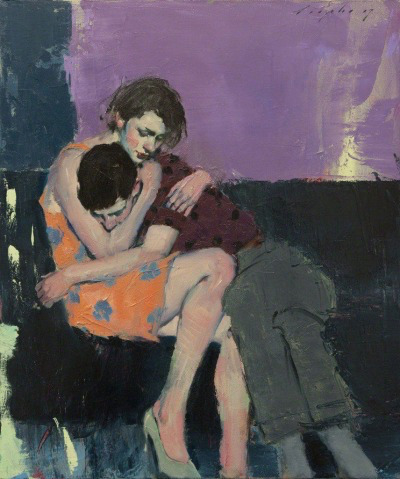




embrace (melt into me)
franz kafka (letters to milena, the castle), malcolm t liepke, andy virgil, 이하이 (LeeHi) - '구원자 (Savior) (Feat. BI)
˗ˏˋ☕ˎˊ˗
#web weavings#parallels#art parallels#art#literature#quotes#embrace#franz kafka#letters to milena#the castle#love and longing come hand in hand#malcolm t liepke#andy virgil#lee hi#music#kpop
4K notes
·
View notes
Text
Life Without Black People
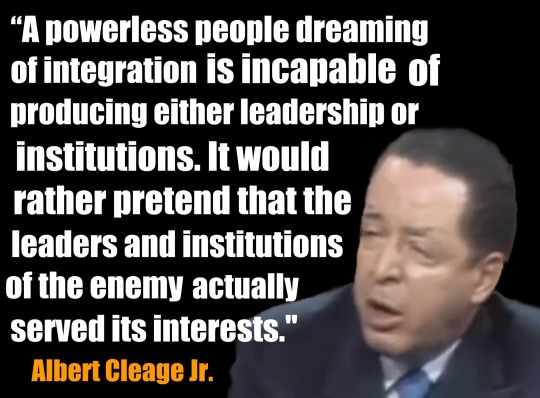
A very humorous and revealing story is told about a group of white people who were fed up with African Americans, so they joined together and wished themselves away. They passed through a deep dark tunnel and emerged in sort of a twilight zone where there is an America without black people.
At first these white people breathed a sigh of relief.
'At last', they said, 'no more crime, drugs, violence and welfare.'
All of the blacks have gone! Then suddenly, reality set in. The 'NEW AMERICA' is not America at all - only a barren land.
1. There are very few crops that have flourished because the nation was built on a slave-supported system.
2. There are no cities with tall skyscrapers because Alexander Mils, a black man, invented the elevator, and without it, one finds great difficulty reaching higher floors.
3. There are few if any cars because Richard Spikes, a black man, invented the automatic gearshift, Joseph Gambol, also black, invented the Super Charge System for Internal Combustion Engines, and Garrett A. Morgan, a black man,
invented the traffic signals.
4. Furthermore, one could not use the rapid transit system because its procurer was the electric trolley, which was invented by another black man, Albert R. Robinson.
5. Even if there were streets on which cars and a rapid transit system could operate, they were cluttered with paper because an African American, Charles Brooks, invented the street sweeper..
6. There were few if any newspapers, magazines and books because John Love invented the pencil sharpener, William Purveys invented the fountain pen, and Lee Barrage invented the Type Writing Machine and W. A. Love invented the Advanced Printing Press. They were all, you guessed it, Black.
7. Even if Americans could write their letters, articles and books, they would not have been transported by mail because William Barry invented the Postmarking and Canceling Machine, William Purveys invented the Hand Stamp and Philip Downing invented the Letter Drop.
8. The lawns were brown and wilted because Joseph Smith invented the Lawn Sprinkler and John Burr the Lawn Mower.
9. When they entered their homes, they found them to be poorly ventilated and poorly heated. You see, Frederick Jones invented the Air Conditioner and Alice Parker the Heating Furnace. Their homes were also dim. But of course, Lewis Lattimer later invented the Electric Lamp, Michael Harvey invented the lantern, and Granville T. Woods invented the Automatic Cut off Switch. Their homes were also filthy because Thomas W. Steward invented the Mop and Lloyd P. Ray the Dust Pan.
10. Their children met them at the door - barefooted, shabby, motley and unkempt. But what could one expect? Jan E. Matzelinger invented the Shoe Lasting Machine, Walter Sammons invented the Comb, Sarah Boone invented the Ironing Board, and George T. Samon invented the Clothes Dryer.
11. Finally, they were resigned to at least have dinner amidst all of this turmoil. But here again, the food had spoiled because another Black Man, John Standard invented the refrigerator...
Now, isn't that something? What would this country be like without the contributions of Blacks, as African-Americans?
Martin Luther King, Jr. said, 'by the time we leave for work, millions of Americans have depended on the inventions from the minds of Blacks.'
Black history includes more than just slavery, Frederick Douglas, Martin Luther Kinbg, Jr., Malcolm X, and Marcus Garvey & W.E.B. Dubois.
PLEASE SHARE, ABUNDANTLY
52 notes
·
View notes
Text
CHRONOLOGY OF AMERICAN RACE RIOTS AND RACIAL VIOLENCE p-5
1961
May First Freedom Ride.
1962
Harlem Youth Opportunities Unlimited (HARYOU) is founded.
Robert F. Williams publishes Negroes with Guns, exploring Williams’ philosophy of black self-defense.
October Two die in riots when President John F. Kennedy sends troops to Oxford,Mississippi, to allow James Meredith to become the first African American student to register for classes at the University of Mississippi.
1963
Publication of The Fire Next Time by James Baldwin.
Revolutionary Action Movement (RAM) is founded.
April Rev. Martin Luther King, Jr., writes his ‘‘Letter from Birmingham Jail.’’
June Civil rights leader Medgar Evers is assassinated in Mississippi.
August March on Washington; Rev. King delivers his ‘‘I Have a Dream’’ speech before the Lincoln Memorial in Washington, D.C.
September Four African American girls—Carol Denise McNair, Cynthia Wesley, Carole Robertson, and Addie Mae Collins—are killed when a bomb explodes at theSixteenth Street Baptist Church in Birmingham, Alabama.
1964
June–August Three Freedom Summer activists—James Earl Chaney, Andrew Goodman, and Michael Schwerner—are arrested in Philadelphia, Mississippi; their bodies are discovered six weeks later; white resistance to Freedom Summer activities leads
to six deaths, numerous injuries and arrests, and property damage acrossMississippi.
July President Lyndon Johnson signs the Civil Rights Act.
New York City (Harlem) riot.
Rochester, New York, riot.
Brooklyn, New York, riot.
August Riots in Jersey City, Paterson, and Elizabeth, New Jersey.
Chicago, Illinois, riot.
Philadelphia, Pennsylvania, riot.
1965
February While participating in a civil rights march from Selma to Montgomery, Alabama,
Jimmie Lee Jackson is shot by an Alabama state trooper.
Malcolm X is assassinated while speaking in New York City.
March Bloody Sunday march ends with civil rights marchers attacked and beaten by local lawmen at the Edmund Pettus Bridge outside Selma, Alabama.
Lowndes County Freedom Organization (LCFO) is formed in Lowndes County,Alabama.
First distribution of The Negro Family: The Case for National Action, better known as The Moynihan Report, which was written by Undersecretary of Labor Daniel Patrick Moynihan and Nathan Glazer.
July Springfield, Massachusetts, riot.
August Los Angeles (Watts), California, riot.
1965–1967
A series of northern urban riots occurring during these years, including disorders in the Watts section of Los Angeles, California (1965), Newark, New Jersey (1967), and
Detroit, Michigan (1967), becomes known as the Long Hot Summer Riots.
1966
May Stokely Carmichael elected national director of the Student Nonviolent Coordinating Committee (SNCC).
June James Meredith is wounded by a sniper while walking from Memphis, Tennessee, to Jackson, Mississippi; Meredith’s March Against Fear is taken up by Martin Luther King, Jr., Stokely Carmichael, and others.
July Cleveland, Ohio, riot.
Murder of civil rights demonstrator Clarence Triggs in Bogalusa, Louisiana.
September Dayton, Ohio, riot.
San Francisco (Hunters Point), California, riot.
October Black Panther Party (BPP) founded by Huey P. Newton and Bobby Seale.
1967
Publication of Black Power: The Politics of Liberation by Stokely Carmichael and Charles V. Hamilton.
May Civil rights worker Benjamin Brown is shot in the back during a student protest in Jackson, Mississippi.
H. Rap Brown succeeds Stokely Carmichael as national director of the Student Nonviolent Coordinating Committee (SNCC).
Texas Southern University riot (Houston, Texas).
June Atlanta, Georgia, riot.
Buffalo, New York, riot.
Cincinnati, Ohio, riot.
Boston, Massachusetts, riot.
July Detroit, Michigan, riot.
Newark, New Jersey, riot.
1968
Publication of Soul on Ice by Eldridge Cleaver.
February During the so-called Orangeburg, South Carolina Massacre, three black college students are killed and twenty-seven others are injured in a confrontation with police on the adjoining campuses of South Carolina State College and Claflin College.
March Kerner Commission Report is published.
April Dr. Martin Luther King, Jr., is assassinated in Memphis, Tennessee.
President Lyndon Johnson signs the Civil Rights Act of 1968.
Washington, D.C., riot.
Cincinnati, Ohio, riot.
August Antiwar protestors disrupt the Democratic National Convention in Chicago.
1969
May James Forman of the SNCC reads his Black Manifesto, which calls for monetary reparations for the crime of slavery, to the congregation of Riverside Church in New York; many in the congregation walk out in protest.
July York, Pennsylvania, riot.
1970
May Two unarmed black students are shot and killed by police attempting to control civil
rights demonstrators at Jackson State University in Mississippi.
Augusta, Georgia, riot.
July New Bedford, Massachusetts, riot.
Asbury Park, New Jersey, riot.
1973
July So-called Dallas Disturbance results from community anger over the murder of a twelve-year-old Mexican-American boy by a Dallas police officer.
1975–1976
A series of antibusing riots rock Boston, Massachusetts, with the violence reaching a climax in April 1976.
1976
February Pensacola, Florida, riot.
1980
May Miami, Florida, riot.
1981
March Michael Donald, a black man, is beaten and murdered by Ku Klux Klan members in Mobile, Alabama.
1982
December Miami, Florida, riot.
1985
May Philadelphia police drop a bomb on MOVE headquarters, thereby starting a fire that consumed a city block.
1986
December Three black men are beaten and chased by a gang of white teenagers in Howard Beach, New York; one of the victims of the so-called Howard Beach Incident is killed while trying to flee from his attackers.
1987
February–April Tampa, Florida, riots.
1989
Release of Spike Lee’s film, Do the Right Thing.
Representative John Conyers introduces the first reparations bill into Congress—the Commission to Study Reparation Proposals for African Americans Act; this and all subsequent reparations measures fail passage.
August Murder of Yusef Hawkins, an African American student killed by Italian-American youths in Bensonhurst, New York.
1991
March Shooting in Los Angeles of an African American girl, fifteen-year-old Latasha Harlins, by a Korean woman who accused the girl of stealing.
Los Angeles police officers are caught on videotape beating African American motorist Rodney King.
1992
April Los Angeles (Rodney King), California, riot.
1994
Survivors of the Rosewood, Florida, riot of 1923 receive reparations.
February Standing trial for a third time, Byron de la Beckwith is convicted of murdering civil rights worker Medgar Evers in June 1963.
18 notes
·
View notes
Text
Black artist exploration: Ruth E Carter
The Academy Award winner and Hampton Alum, best known for her costume design in The Black Panther film series and numerous Spike Lee films has been at it for over 40 years. Let's do a run-down of her decades-long career.
🪡🧵🪡🧵🪡🧵🪡🧵🪡🧵The Phenomenal Ruth Carter🪡🧵🪡🧵🪡🧵🪡🧵🪡🧵🪡🧵

Ruth E. Carter´s Beginnings
Ruth E. Carter was born and raised in Springfield, MA. Initially, Carter saw herself on stage instead of backstage, starring in numerous uni productions as a theatre major during her time at Hampton. She picked up her sewing skills as a teenager practicing with different sewing patterns and used that as a part of her way to express herself as she was the youngest of 8. It was during her time at Hampton that a professor asked her to help in the costume department, and she found her true passion in costume design. She had a small workshop where she created costumes for the theatre department, the travel dance companies, the campus musicals, and the steppers.
In an interview with American Matters she discussed where her love for costume design began: ¨...I realized that it was an artistic medium. And I got to see my work on stage and look at color balance and relationships between people by what they were wearing, and it allowed me to step outside of my desire to be on stage and inside the story, it allowed me to step outside the story and orchestrate what I was doing with all the characters. And that’s how I fell in love with it. I thought this is big. It felt bigger than just playing the one character.¨
After graduating, she went back home and interned at her local theater for a year. The next year, she went across the country to New Mexico to intern with the Santa Fe Opera. She was dedicated to growing her craft, and it was during this time that she truly fell in love with costume design and felt like she was stepping into something new. She moved to LA at 26, and later that year, she worked with the Los Angeles Theatre Center and worked her way up to an administration job. Carter realized over time that administration was not what she wanted and found an opportunity to travel with a dance company as their costume designer. It was at this time she met Spike Lee.
Meeting Spike Lee would redirect Carter to her true passion for creating costumes for film and TV. At the time, Spike Lee had begun production on She´s Gotta Have It and asked Carter to consider working on a student thesis film. It was during this time she understood how film wasn't so focused on bravado as theatre arts were, the focus was more dedicated to showcasing the details, or the subtleties of characters. She understood that even everyday people, in their everyday lives, are telling stories through the clothes they wear and how they wear them.
In an interview with NPR´s Fresh Air: ¨There is someone that you personify in that vision of yourself, in your mind, and there's also that vision of someone who we see, the representative of you. And that's where fashion stops and costume begins, because we create a mood for ourselves. We create a voice that we want to project to the world without us saying a word. And that's what costumes do. They communicate amongst each other. Either they're collaborative or they are in opposition. They say who you are or who you want to be or how you want to be perceived. And that's the part of clothing that can be so simple and yet so complicated.¨

Her Most Iconic Designs
Malcolm X directed by Spike Lee (1992)
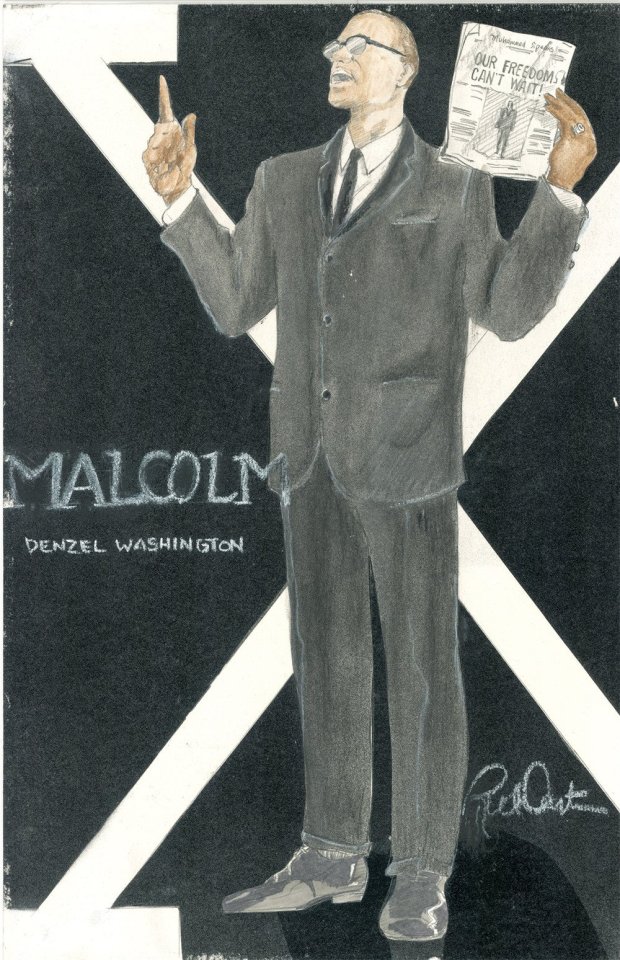

To create the costumes for this project Ruth was blessed with the opportunity to interview Betty Shabazz about her time with Malcolm and who he was behind closed doors. She also was granted access to his prison letters allowing for a more intimate understanding of who this person was before he became Malcolm X. To build a costume for a real person, she looked into his personal history and textile history from the 1920s to '60s. The costume design for Malcolm X would grant her the first of multiple prestigious film nominations, garnering an Oscar Nomination.
Carter describes the costuming for Malcolm X:
¨...each stage in his life deserved a different color palette since his mindset was different in all the stages of his life. When he is Malcolm Little and Detroit Red, the color palette is playful with the zoot suits. When he is incarcerated, the palette is a blue like he is being cleansed. When he emerges as Malcolm X, there are black, white, and grey notes for his clean, strict, and unwavering devotion to the nation of Islam." This dark suit, was worn during the time that Malcolm X was fully immersed in the nation of Islam.¨
Black Panther (2018) and Wakanda Forever (2022)
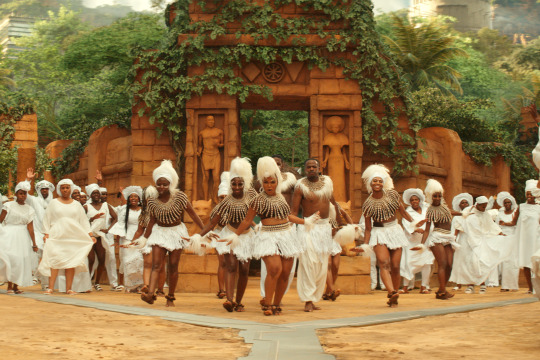


Black Panther and Black Panther: Wakanda Forever would grant Ruth her first and second Oscar win for outstanding Costume Design. Her designs sit on display at the North Carolina Art Museum honoring her ability to tap into Afro-futurism in design. For these projects she studied not only the comics but kept a specific imagery in mind and remain dedicated to the artistry and storytelling of traditional clothing around Africa, specifically South Africa. Within the story there were multiple fictional tribes represented, a heritage of beading, pattern work, and specific garments were important in portraying the station at which the different characters existed, taking from real life examples instead of creating her own separate designs.
From Ruth E Carter´s website on designing the costumes for Black Panther (2018)
When Carter was in the initial planning stages for the film, she printed out four words and pinned them to her wall: beautiful, positive, forward, and colorful. These adjectives guided her process and can all be used to describe the stunning Black Panther costumes, which merge technology and tradition.
“I think people will be able to contextualize and look at African art and appreciate it so much differently. That’s what we did: We appreciated it, we reimagined it, we took it to another level, another place, and there were inspirations everywhere!”
School Daze (1988)




The 1988 film would be the first of many projects Spike Lee and Carter would collaborate on together. This film was inspired by Lee's times at Morehouse and touched on numerous -isms that exist within the Black community, specifically being exasperated in a college setting. For this project, they would collaborate with the iconic fashion designer known for his ¨street couture,¨ Willi Smith creator of Williwear who provided designs for all of the costumes for the homecoming scenes. Although her time at Hampton would prepare her for the type of costume designing needed for this project, Carter found herself incredibly overwhelmed. This was a small production, with a small budget but she found a way to manage. This project would set the tone for her career to come.
Advice from an interview I thought all creatives need to hear:
¨My advice is that you get a strong foundation of how you go about coming up with ideas and I think it’ll stay with you for the rest of your career. My foundation was research. I love to research.¨ Carter in an interview with American Matters: Creative spark Feb, 9th 2023.
Carter Discussing Costume Design vs. Fashion Design
¨Overall, fashion is about a development of a personality in the world, usually based around a real person that is a celebrity or a muse. Costume design is creating the psychology of the fictional character and the person behind the clothes. When fashion designers give you something, they don’t expect you to, like, dirty it up. They don’t expect you to make it look oversized or rumpled. But with costuming, the clothes are part of telling a story. That story could be that the actors slept in their car. So it’s often really hard to incorporate commercial design because we’re working with different goals in mind.¨
Thank you for reading! I hope you learned something new.
Signing off,
B, the Virgo

sources:
#ruth carter#virgo#wikipedia#black panther#black artist#costume design#hollywood#spike lee#school daze
2 notes
·
View notes
Text
LIFE WITHOUT BLACK PEOPLE
(author unknown)
A very humorous and revealing story is told about a group of white people who were fed up with African Americans, so they joined together and wished themselves away. They passed through a deep dark tunnel and emerged in sort of a twilight zone where there is an America without Black people.
At first these white people breathed a sigh of relief. At last, they said, “No more crime, drugs, violence and welfare. All of the Black s have gone!”
Then suddenly, reality set in. The “NEW AMERICA” is not America at all — only a barren land.
1. There are very few crops that have flourished because the nation was built on a slave-supported system.
2. There are no cities with tall skyscrapers because Alexander Miles, a Black man, invented the elevator, and without it, one finds great difficulty reaching higher floors.
3. There are few if any cars because Richard Spikes, a Black man, invented the automatic gearshift, Joseph Gambol, also Black, invented the Super Charge System for Internal Combustion Engines, and Garrett A. Morgan, a Black man, invented the traffic signals.
4. Furthermore, one could not use the rapid transit system because its procurer was the electric trolley, which was invented by another Black man, Albert R. Robinson.
5. Even if there were streets on which cars and a rapid transit system could operate, they were cluttered with paper because an African American, Charles Brooks, invented the street sweeper.
6. There were few if any newspapers, magazines and books because John Love invented the pencil sharpener, William Purveys invented the fountain pen, and Lee Barrage invented the Type Writing Machine and W. A. Love invented the Advanced Printing Press. They were all, you guessed it, Black.
7. Even if Americans could write their letters, articles and books, they would not have been transported by mail because William Barry invented the Postmarking and Canceling Machine, William Purveys invented the Hand Stamp and Philip Downing invented the Letter Drop.
8. The lawns were brown and wilted because Joseph Smith invented the Lawn Sprinkler and John Burr the Lawn Mower.
9. When they entered their homes, they found them to be poorly ventilated and poorly heated. You see, Frederick Jones invented the Air Conditioner and Alice Parker the Heating Furnace. Their homes were also dim. But of course, Lewis Later invented the Electric Lamp, Michael Harvey invented the lantern and Granville T. Woods invented the Automatic Cut off Switch. Their homes were also filthy because Thomas W. Steward invented the Mop and Lloyd P. Ray the Dust Pan.
10. Their children met them at the door -- barefooted, shabby, motley and unkempt. But what could one expect? Jan E. Matzelinger invented the Shoe Lasting Machine, Walter Sammons invented the Comb, Sarah Boone invented the Ironing Board and George T. Samon invented the Clothes Dryer.
11. Finally, they were resigned to at least have dinner amidst all of this turmoil. But here again, the food had spoiled because another Black Man, John Standard invented the refrigerator.
Now, isn’t that something? What would this country be like without the contributions of Blacks, as African Americans?
Martin Luther King, Jr. said, “by the time we leave for work, Americans have depended on the inventions from the minds of Blacks.” Black history includes more than just slavery, Frederick Douglass, Martin Luther King, Jr., Malcolm X, and Marcus Garvey and W.E.B. Dubois.
#african american#america#racism#black history#inventions#contributions#bigotry#human rights#social justice#history
5 notes
·
View notes
Text
Book I’ve Read!
These are titles I’ve read so far as my memory can recall! I do still remember the first novel I read (but not sure it really was the first or the first touching my heart...) so yeah this is it! (not in an orderly manner)
Fiction
1. Herr der Diebe (The Thief Lord) by Cornelia Funke
2. Harry Potter Series by J. K. Rowling (- The Philosopher’s Stone and The Order of The Phoenix
3. The Mortal Instruments Series by Cassandra Clare (only City of Bones and City of Glass)
4. Catching Fire by Suzanne Collins
5. A Series of Unfortunate Events by Lemony Snicket (only The Wide Window and The Penultimate Peril)
6. Legend of Great Tang’s Twin Dragons by Huang Yi
7. The Hundred-Year-Old Man Who Climbed Out of The Window and Disappeared by Jonas Jonasson
8. Sherlock Holmes Series by Sir Arthur Conan Doyle
• Sign of Four
• The Adventures of Sherlock Holmes: The Five Orange Pips
• The Return of Sherlock Holmes: The Adventures of Empty House, ...of Norwood Builder, ...of Dancing Men, ...of Six Napoleons, ...of the Goldern Pince-Nez
• His Last Bow: The Adventure of Wisteria Lodge, ...of the Bruce-Partington Plans, ...of Lady Frances Carfax
• The Case-Book of Sherlock Holmes: The Adventure of the Three Garridebs
9. Jack Nightingale Series by Stephen Leather (Nightfall, Midnight, and Lastnight)
10. The Catcher In The Rye by J.D. Salinger
11. To Kill A Mockingbird by Harper Lee
12. The Brother Karamazov by Fyodor Dostoyevsky
13. On The Road by Jack Kerouac
14. Wuthering Heights by Emily Brontë
15. Le Petit Prince by Antoine de Saint-Exupéry
16. Notes From Underground by Fyodor Dostoyevsky
17. Book of Souls by Glenn Cooper
18. The Time Keeper by Mitch Albom
19. The First Phone Call from Heaven by Mitch Albom
20. Love Letters to The Dead by Ava Dellaira
21. Ways to Live Forever by Sally Nicholls
22. Life of Pi by Yann Martel
23.
Comic books
1. Slam Dunk by Inoue Takehiko
2. Detective Conan by Aoyama Gosho
3. Interstellar Bridge/Seikan Bridge by Kyukkyupon
4. Hunter x Hunter by Yoshihiro Togashi
5. Yuyu Hakusho by Yoshihiro Togashi
6. Death Note by Tsugumi Ohba
7. Bakuman by Tsugumi Ohba
8. Kuroko’s Basketball by Tadatoshi Fujimaki
9. Nozaki by Izumi Tsubaki
10. Haikyuu!! by Haruichi Furudate
11. Kocchi Muite! Miiko by Eriko Ono
12. Fullmetal Alchmeist by Hiromu Arakawa
13. Solanin by Inio Asano
14.
Nonfiction
1. Blue Collar, Blue Scrubs by Michael Collins, MD.
2. Ceci est ma femme by Oliver Sacks
3. The 5-Second Rule by Mel Robbins
4. Blink! by Malcolm Gladwell
5. David and Goliath by Malcolm Gladwell
6. What The Dog Saw by Malcolm Gladwell
7. The 7 Habits of Highly Effective People by Stephen Covey
8. Guns, Germs and Steel by Jared Diamonds
9. When by Daniel H. Pink
10. The Order of Time by Carlo Rovelli
11. The Problems of Philosophy by Bertrand Russel
12. The View from Planet Earth by Vincent Cronin
13. Collapse by Jared Diamond
14. How to Lead When Your Boss Can’t or Won’t by J. C. Maxwell
15. Aristotle’s Children by R. E. Rübenstein
16. Atomic Habits by James Clear
17. The Naked Traveler 3 & 4 by Trinity
18.
1 note
·
View note
Text
Books I Read in 2022
1. Beast Boy Loves Raven By Kami Garcia & Gabriel Picolo
2. Dear Girl By Aija Mayrock
3. A Fire Like You By Upile Chisala
4. Nectar By Upile Chisala
5. Soft Magic By Upile Chisala
6. As If On Cue By Marisa Kanter
7. Heartstopper Volume 4 By Alice Oseman
8. Address Unknown By Katherine Kressmann Taylor
9. Ariel By Sylvia Plath
10. Heart Talk By Cleo Wade
11. At Somerton: Cinders & Sapphires By Leila Rasheed
12. At Somerton: Diamonds & Deceit By Leila Rasheed
13. Unlock Your Storybook Heart By Amanda Lovelace
14. Instructions for Dancing By Nicola Yoon
15. Martita, I Remember You By Sandra Cisneros
16. Brown Girls By Daphne Palasi Andreades
17. Here's to Us By Becky Albertalli & Adam Silvera
18. Counting by 7s By Holly Goldberg Sloan
19. The Summer I Turned Pretty By Jenny Han
20. It's Not Summer Without You By Jenny Han
21. We'll Always Have Summer By Jenny Han
22. Everything I Need to Know I Learned From Mr. Rogers' Neighborhood By Melissa Wagner & Fred Rogers
23. Gained a Daughter But Nearly Lost My Mind: How I Planned a Backyard Wedding During a Pandemic By Marlene Kern Fischer
24. At Somerton: Emeralds & Ashes By Leila Rasheed
25. Café Con Lychee By Emery Lee
26. The Book Tour By Andi Watson
27. God Bless You, Dr. Kevorkian By Kurt Vonnegut
28. Yoga Pant Nation By Laurie Gelman
29. Mr. Malcolm's List By Suzanne Allain
30. Miss Lattimore's Letter By Suzanne Allain
31. The Road Between By Courtney Peppernell
32. Enough Rope By Dorothy Parker
33. My Favorite Half-Night Stand By Christina Lauren
34. Smells Like Tween Spirit By Laurie Gelman
35. How to Be a Wallflower By Eloisa James
36. Be Like the Moon By Levi Welton
37. Morality for Muggles: Ethics in the Bible and the World of Harry Potter By Moshe Rosenberg
38. 84, Charing Cross Road By Helene Hanff
39. Josh & Hazel's Guide to Not Dating By Christina Lauren
40. The Matchmaker By Thornton Wilder
41. The Cheat Sheet By Sarah Adams
42. All-of-a-Kind Family By Sydney Taylor (Re-read)
43. Shadow Angel Book One By Leia Stone & Julie Hall
44. Spooky America: The Ghostly Tales of Sleepy Hollow By Jessa Dean
45. Needle & Thread By David Pinckney, Ennun Ana Iurov, Micah Myers
46. Good Game, Well Played By Rachael Smith, Katherine Lobo, Justin Birch
47. Home Sick Pilots By Dan Walters & Caspar Wijngaard
48. Beyond the Wand: The Magic & Mayhem of Growing Up a Wizard By Tom Felton
49. Legends and Lore of Sleepy Hollow and the Hudson Valley By Jonathan Kruk
50. Heartless Prince By Leigh Dragoon
51. A Contract with God By Will Eisner
52. Messy Roots: A Graphic Memoir of a Wuhanese American By Laura Gao
53. Blackwater By Jeannette Arroyo and Ren Graham
54. Woman World By Aminder Dhaliwal
55. In Real Life By Cory Doctorow & Jen Wang
56. Lore Olympus Volume 1 By Rachel Smythe
57. Hereville: How Mirka Got Her Sword By Barry Deutsch
58. Persuasion By Jane Austen
59. Devil in Disguise By Lisa Kleypas
60. Shadow Angel Book Two By Leia Stone & Julie Hall
61. Lore Olympus Volume 2 By Rachel Smythe
62. Talk to My Back By Yamada Murasaki
63. How I Saved Hanukkah By Amy Goldman Koss
64. Haven Jacobs Saves the Planet By Barbara Dee
65. Shadow Angel Book Three By Leia Stone & Julie Hall
66. The Matzah Ball By Jean Meltzer
67. Canción By Eduardo Halfon
68. Leopoldstadt By Tom Stoppard
69. Say Yes to the Duke By Eloisa James
70. Winter Roses after Fall By Robert M. Drake & r.h. Sin
71. Roomies By Christina Lauren
72. Falling Toward the Moon By Robert M. Darake & r.h. Sin
73. Empty Bottles Full of Stories By Robert M. Drake & r.h. Sin
2 notes
·
View notes
Text
Whether exploring an African-American woman's sexuality (She's Gotta Have It) or negotiating the intricacies of interracial romance in urban America (Jungle Fever), Spike Lee has always taken the controversial issue and made it a personal statement. Whether successful or not, those statements, or "joints," as Lee calls them, are always deeply grounded in the immediacy of the moviegoing experience. That sense of immediacy is guaranteed by Lee's collaborator and cinematographer, Ernest Dickerson, ASC.
Lee and Dickerson have collaborated again on a "joint" intended to recreate the life of a man who, according to Lee, "rose up from the dregs of society, spent time in jail, reeducated himself and, through spiritual enlightenment, rose to the top." That man was Malcolm X, and the movie attempts to recreate the landscape of the political and the personal upon which his life and death were played out. The photographic approach of the film is reflected in the publicity poster for Malcolm X: a grey capital letter X against a jet black-background creates an image that is stark, bold, simple — and very powerful.
0 notes
Text
Eventually I'll do a write-up on the minor OCs in my fics. Perhaps build them their own little universes because they deserve it. Especially Alice and Eileen, my beautiful lesbian babies. Some backstory and faceclaims below for those who don't read my fics because I LOVE these two sm (general Night Letter ramblings as well below the cut, lots of rehashed stuff heh).
For those who don't read Night Letter, Frankie is my Sole Survivor OC. He's a gay (cowboy-adjacent) man born in TN. He was moved out to/raised in TX when he was ~4 by his father (who became an alcoholic) after his mom passed away while having his younger brother (who also didn't make it). He's got three older sisters who were very protective of him.
Frankie shipped up to Boston for the military after his dad caught him kissing boys & this lovely lady named Alice at a bar near her college/his station. They hit it off really well and found common ground in being closeted gays. They met up a few more times before deciding to get married to keep up appearances and maintain an "acceptable" social life. And also to appease both their families to remain in their respective inheritances, of course. Gotta do what you gotta do.
Eileen was Alice's live-in "friend". Or long-distance cousin, depending on the day. So far as anyone in Sanctuary Hills knew anyway lmao Surprise! They were partners and met in college. Frankie loved them both so so so dearly. They reminded him of his sisters back home, whom he missed constantly while settling down in Boston. Alice and Eileen doted on him furiously and were the only reason he stayed sane when Malcolm - Frankie's first true love that he met in the military - was killed in action. They kept him grounded.
Shaun was born from Alice and Frankie in the technical sense only. The ladies really wanted a kid together, and Frankie was willing & available to help with that (via sperm donation). He always felt more like an uncle than a father, and that's what they always called him: Uncle Frankie. I might be reconning my own fic here, in all honesty. I actually can't remember if I mentioned the term "uncle" specifically in Night Letter. Also I'm pretty sure I just said he was available to help in that department and never specified that he didn't fuck Alice!!!!!! ALSO he does strategically refer to himself as Shaun's father in the post-apocalypse because he thinks it legitimizes his cause to find him more than if he were just his uncle, saying it for the sake of emotional appeal to those he might need help from. You bet your ass he'll go back to being Uncle once Shaun is living with them :')
My FCs for Alice and Eileen are Elizabeth Taylor and Jane Powell (respectively) because I saw this one picture and couldn't help myself bc they are so goddamn cute

Do note: they are merely mentioned in the fic (posthumously obviously). I have ~problems~ because I have way too much in my head for them despite them not being relevant at all. Like how their first date was a total disaster because Alice stupidly suggested they get milkshakes. Alice does not like sweet things. Eileen does, but they're both lactose intolerant. Neither said anything because they were both just so nervous and trying to be romantic. The date itself was fine, but they couldn't meet up the next day because they were both SUFFERING. Both made elaborate excuses as to why they didn't show up, only to find the other hadn't showed either. They didn't talk about it, calling it a wash, and only found the truth out after two years of being together when wine drunk one night in Eileen's dorm room.
In other news, is it bad that I've considered making Eileen into a ghoul?? Alice was Frankie's legal wife so she was in the vault. But Eileen was out of the house when the bombs fell (not that she was registered for the vault anyway). I like to think she went ghoul instead of being struck from earth okay let me be 😭😭
Less important, but Malcolm (aka Mal, aka loverboy) and Frankie (aka Franklin Lee Barr aka don't fuckin' call me Franklin) are Sal Mineo and James Dean, respectively:

#i give pay them an homage in raise hell (in name only) because i think about them all the time#but they exist within the Frankie-verse#oh no regg is being annoying about OCs again what a SURPRISE#oc: alice#oc: eileen#fic: night letter#throwing this there because of the FCs#oc: malcolm#oc: frankie#a lot of this is in the fic already but i'm putting it all in one place so i can pull it up when i need to#// implied homophobia
0 notes
Text
as emma walks through the cottage, drinking tea ☕️ , she sees a ghost flickering to form and it startled her a little, then realising it was annabel blackthorn ( she noting the girl’s raven black hair in which a flower crown nestled ) ; remembering malcolm resurrected her through magic, inspiring the poem annabel lee.
looking closer, as the story continued, she sees annabel now arrive with her horse at a place in polperro, cornwall. it was a beautiful village with blue water of the sea, annabel pausing, and adjusting her horse’s reins to a stop near a stone monument 🏛 .
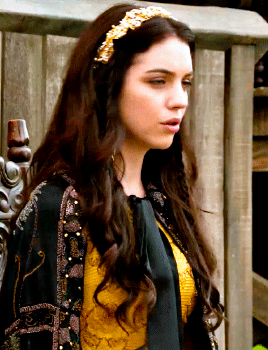
malcolm fade soon appears, walking down the stairs with a wonderment in his eyes. he had met the blackthorns, when they had taken him in as a child, enraptured by annabel’s kindness. they had been writing letters to each other, and meeting in secret ( quite like romeo and juliet ), as he knew annabel’s family ( especially her father felix ) did not approve of shadowhunter and warlocks dating…
emma thinks it’s a nice scene, thinking this memory picture coalescing in the cottage — emanating warmth to it — could mean annabel and malcolm could meet again.
within the water, she also saw another memory of annabel buried in her tomb start to form, as she and malcolm walk by it.
malcolm had heard annabel start to move, giving him hope — a truly beautiful sound, although he knew some would think the convergence was haunted by a ghost and would be frightened of the curse.
1 note
·
View note
Text
A-T-3 014 Graffiti Rock
Following on from the Beat Bop post yesterday here's a list of personal favourites when it comes to graffiti on records sleeves (it's mostly the classics)
[1981] Tom Tom Club - Genius Of Love James Rizzi did all the sleeve artwork for Tom Tom Club's breakthrough 1981 set and its follow-up in 1983 (A-T-3 002). Not strictly thought of as a graffiti artist he exhibited his work outside though
[1981] Trouble Funk - Pump Me Up single picture sleeve
[1982] Futura 2000 - The Adventures Of Futura 2000 Just one of a series of five records released by Celluloid that fit together to show a complete Futura 2000 artwork. The records were used to publicise the New York City Rap Tour in Europe. The tour featured Rammellzee of Beat Bop fame. More info here A-T-2 388
[1983] Malcolm McLaren - Duck Rock
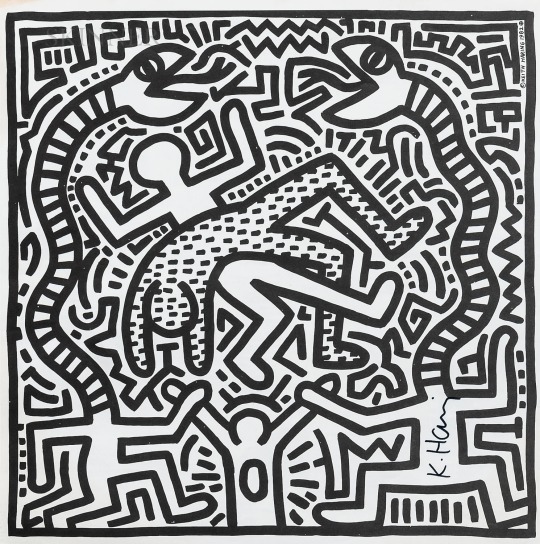
Duck Rock insert by Keith Haring
Duck Rock was Malcolm McLaren's first album under his own name thanks to the musicians that would become The Art Of Noise. Nick Egan produces the sleeve and employs Graffiti legend Dondi to create the lettering for Duck Rock and Keith Haring for the illustration. Egan talks about the project here. When talking about customising I'm surprised he didn't mention mods and their mopeds, I suppose that was The Jam's territory https://albumcoverhalloffame.wordpress.com/2013/08/16/interview-with-nick-egan-the-making-of-the-album-cover-for-duck-rock/
Dondi and Haring's work gets used throughout the releases from this set, including print ads and videos. The 12" cover for the single Duck For The Oyster would be even better if McLaren's face wasn't on it. Overpriced and overrated streetwear brand Supreme saw this too and went to town sticking the Duck For The Oyster artwork on their overpriced and overrated streetwear
Here's the long version of Hobo Scratch, check the bit A Tribe Called Quest ref in Award Tour. I write about Buffalo Gals here A-T-2 102 and share She's Looking Like A Hobo because I really like this track!
Malcolm McLaren - Hobo Scratch (She's Looking Like A Hobo)
youtube
[1983] N.Y.C. Peech Boys - Life Is Something Special Keith Haring does the sleeve artwork for Peech Boys album, this artwork is now reproduced on all sorts with no reference to the album. Unlike the McLaren album above Haring and Larry Levan were friends, in 1984 Keith Haring would have his birthday party at Paradise Garage where Madonna performed for him
Don't Make Me Wait and Life Is Something Special are released as singles in 1982, the later gets put on the Pumping Iron II: The Women soundtrack. Here's the dub of On A Journey released in 1983
N.Y.C. Peech Boys - On A Journey (Dubmix)
youtube
[1983] Wild Style OST with the piece by Zephyr, Revolt, and Sharp on the cover. The film follows graffiti artist Zoro played by LEE. The film is a slice of history, it's clunky but it was how many of us were introduced to hip hop
Here's an interview with Zephyr about the animated title sequence https://www.artofthetitle.com/title/wild-style/
...and this is Cold Crush Crew and Fantastic Freaks from the soundtrack
youtube
[1984] Digette - Fred From Jupiter The sleeve features artwork by Kenny Scharf. This is an odd one just look at the people involved and the thank yous, it's like a kitchy Club 57 cabaret record. Most importantly though the record is dedicated to the memory of Michael Stewart who was a graffiti artist murdered by the police in 1983 https://www.insideedition.com/the-case-of-michael-stewart-the-new-york-artist-some-say-was-sentenced-to-death-for-drawing-on
[1984] Jellybean - Wotupski!?! one of the best graffiti record covers ever produced which is no surprise as it's by Duster and SEEN. There's a lexicon of graffiti terminology on the inner sleeve. Here's the SEEN and Duster bit from the landmark 1983 documentary Style Wars. SEEN's had heart surgery this time last year, hopefully his health is much better now
youtube
[1984] Rock Steady Crew - Uprock Doze from the Rock Steady Crew did the graf on all their sleeves, they are all good but Uprock is a masterpiece (unlike the album by produced by Stephen Hague)
[1984] Subway Art - by Martha Cooper, Henry Chalfant The bible. Martha Cooper's Spray Nation came out last last year
[1985] Mantronix - Needle To The Groove artwork by Gnome & Gemini
[1985] Sleeping Bag Records - Greatest Mixers Collection by Konk (the painter not the band)
[1985] Schoolly-D - Schoolly-D - Schoolly-D
[1985] MC ADE - Bass Rock Express this is just his logo on the labels but the I want to make a point in saying graffiti and Miami bass/booty bass was linked from the get go, it would catch my eye in shops (it was the graf not the booty)
[1986] Just Ice - Back To The Old School Gnome & Gemini's other classic sleeve
[1986] B-52s - Girl From Ipanema Goes To Greenland Crazy dub on this record. Kenny Scharf sleeve artwork, the sleeve artwork to the album Bouncing Off The Satellites is also one of his
[1987] Street Sounds Hip Hop 17 (to 20, and 22) massively influential sleeves on the UK graffiti scene. The first records in the series to include Miami Bass and the first with a graffiti sleeve by Artful Dodger of The Trailblazers who went on to become The Chrome Angelz
[1987] Bomb The Bass - Beat Dis Who watches the watchmen? also by Artful Dodger, he also did the sleeve for Three Wize Men's 1988 Rhythm King album G.B. Boyz
[1987] Spraycan Art - Hendy Chalfant and James Prigoff The New Testament, Chrome Angelz on the cover
[1989] Unique 3 - The Theme the design is by System. In the UK graffiti also begins to appear on the labels of underground records like Blapps and rave flyers like Sunrise, Dec 89 and Weekend World
[1992] The Pharcyde - Bizarre Ride II The Pharcyde sleeve artwork and pissing hydrant by OG Slick
[1993] Alte Schule German compilation with sleeve/label art by Mode 2 of Chrome Angelz
Graffiti Rock was a pilot show made for American television in 1984
#1983#graffiti art#malcolm mclaren#trevor horn#anne dudley#keith haring#dondi white#larry levan#peech boys#michael de benedictus#cold crush crew#wild style#style wars#hip hop#disco#80s music
1 note
·
View note
Photo
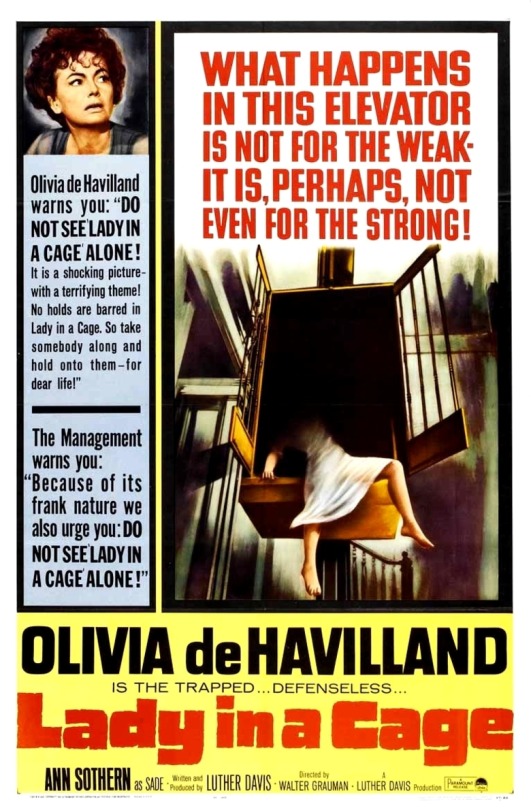
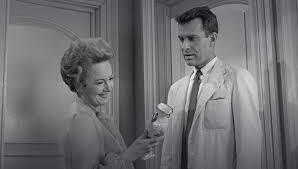
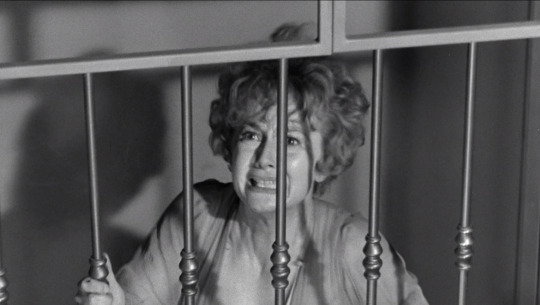
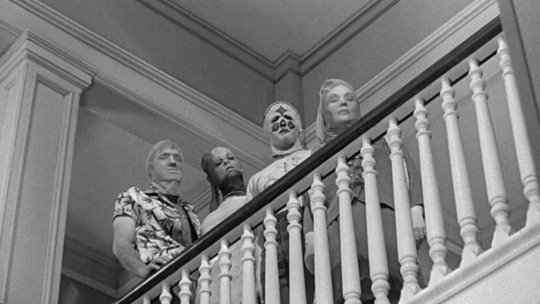
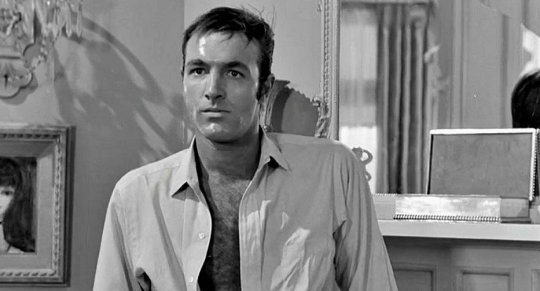
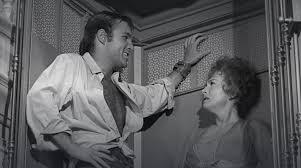
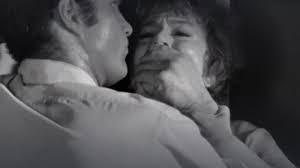



Lady in a Cage (Walter Grauman, 1964)
Cast: Olivia de Havilland, James Caan, Jennifer Billingsley, Rafael Campos, William Swan, Jeff Corey, Ann Sothern, Scatman Crothers, Charles Seel. Screenplay: Luther Davis. Cinematography: Lee Garmes. Production design: Rudolph Sternad. Film editing: Leon Barsha. Music: Paul Glass.
After the success of What Ever Happened to Baby Jane? (Robert Aldrich, 1962), a cruel and ugly word, “hagsploitation,” was coined to denote a new subgenre in which aging movie stars were cast in films that subjected them to all manner of abuse. The stars were all women, of course. Male movie stars like Clark Gable, Gary Cooper, and Humphrey Bogart were allowed to keep playing tough guys and cowboys and even romantic leads until the end of their careers. But actresses like Bette Davis, Joan Crawford, and Olivia de Havilland were stripped of their glamour in movies like Hush ... Hush, Sweet Charlotte (Aldrich, 1964) and Lady in a Cage, which bridged the gap between psychological drama and horror movie. Lady in a Cage is a deeply unpleasant movie, with a pervasively nihilistic view of human beings. Its opening scenes, before we even meet our protagonist, Cornelia Hilyard (de Havilland), feature a young girl tormenting an apparently unconscious woman lying on the sidewalk and a shot of traffic swerving around a dead dog in the street. Soon, Cornelia, who is recovering from a broken hip, has sent her coddled son, Malcolm (William Swan), off on a long holiday weekend, only to be trapped by a power failure in the elevator she has installed in the stairwell of her house. She has an alarm bell, but no one hears it except a ragged wino, George Brady (Jeff Corey), who breaks into the house and begins to plunder it with the help of his friend Sade (Ann Sothern). When they visit the fence (Charles Seel), the loot catches the eye of Randall (James Caan) and his cohort, Essie (Rafael Campos) and Elaine (Jennifer Billingsley), a trio of psychopaths. They proceed to make life hell for Cornelia; in addition to looting and destruction they discover a letter that Malcolm has left for Cornelia in which he threatens to kill himself unless she stops coddling and smothering him. Randall takes the opportunity to suggest that Malcolm is gay and that mother and son are incestuous lovers. Mayhem ensues, and the film ends bleakly. And yet it's a strikingly effective movie, one that feels out of time, anticipating by many years some of the darker films by directors like Lars von Trier and Michael Haneke.
0 notes
Note
what exactly happened to make GW dismiss Burr from his staff after only 10 days? Any theories?
It is my understanding that Burr requested the transfer to Putnam's staff. The reasons are unclear, but we do know that Burr and Washington could not be more different--Washington was an uneducated planter from Virginia. His military career until that point had been disaster after disaster. He had won no major battles, and his blunder was responsible for the French and Indian war.
On top of this, Washington was known to have difficulty dealing with politics and people--he was known for having difficulty managing his anger, though he was good at hiding this (or rather, his aides were good at masking it), he famously exploded on Lee following the Battle of Monmouth, which was arguably undeserved, and was responsible for pushing Putnam (a formerly very respected and experienced officer) out of the military following a mistake on Putnam's part causing a delay in Washington receiving reinforcements. He was known to show little regard or respect to those who deserved it--some credit Washington's treatment with forcing Benedict Arnold's treacherous actions. To say shortly--Washington was very bad at managing his officers.
Washington was at odds with those who saw potential in Burr time and time again, even before Burr was on Washington's staff. According to Arnold, Burr was "a young gentleman of much life and activity, and has acted with great spirit and resolution on our fatiguing march." It is very likely the rift started even before Burr and Washington met. (I will note that later in life Burr condemned Arnold, though it seems likely this is due to the large-scale demonization of Arnold, and the need to distance himself lest he be drawn into Arnold's ruin. Pure conjecture.)
We know for a fact that Burr disliked Washington. According to Adams, “[Burr] despised Washington as a man of no talents and one who could not spell a sentence of common English.” The feelings from Washington were seemingly mutual--Washington passed Burr over for a promotion;
Adams recommended former Continental Army officer Burr as a brigadier-general. Washington responded, “By all that I have known and heard, Colonel Burr is a brave and able officer; but the question is, whether he has not equal talents at intrigue.”
It seems these were two very different people separated by temperament and circumstance. Burr also could not abide sitting behind a desk for most of the war, similar to Hamilton. He had seen some of the fiercest action in Quebec, and the change to Washington's staff would have been a jarring one. Through the intervention of Hancock, Burr was transferred to Putnam's command, but of course this only would have worsened the regard Burr and Washington had for each other--while Putnam was uneducated, he was famously skilled in managing his soldiers--very different from Washington himself. When Putnam came under Washington's critical eye, Burr was once again without a commander. He was moved to Malcolm's Regiment and given a command at Valley Forge--not exactly a testament to military organization planning.
Take into account that just before this Burr personally saved Hamilton's unit in New York, and Putnam saved Washington's, which was an action that Washington, very contrary to traditions at the time, failed to recognize. It was impertinent to snub Burr, but also impertinent for Burr to point out such a slip to Washington, his superior, as he did later in a letter;
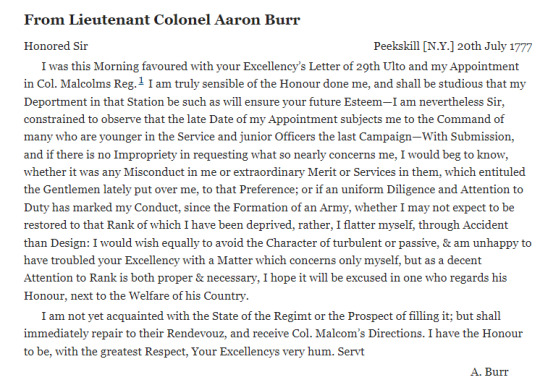
Then, shortly after this Lee's actions at the Battle of Monmouth led to Lee's dismissal from the army. Burr openly defended Lee, something which once again put him and Washington at odds. Burr had seen already many times Washington turning his ire towards men Burr had fought with and respected. Burr was given command of Lee's regiment after Lee was dismissed, and left the army shortly after due to his failing health--he was unable to recover following his heatstroke--his health continued to worsen as he fought back raids by loyalists and deserters in Westchester County.
He continued to assist the army and Washington on small matters such as running messages--but the rift between Burr and Washington had formed and would persist until Washington's death.
#I am not a historian#I only cite one source#Amrev#Aaron Burr#george washington#Israel Putnam#I am so sorry I answered way more than you asked.#ask
53 notes
·
View notes
Text
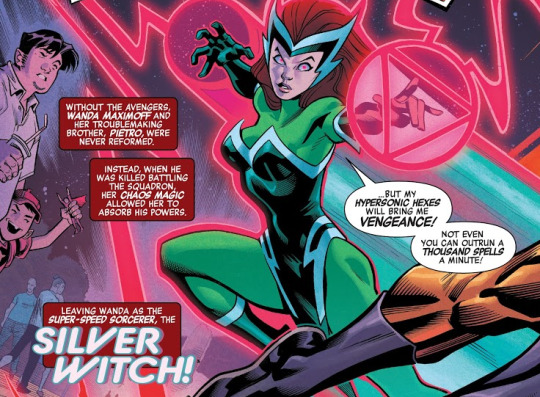
Without the Avengers, Wanda Maximoff and her troublemaking brother, Pietro, were never reformed.
Heroes Reborn #1; writer: Jason Aaron; penciler: Ed McGuinness; inker: Mark Morales; colorist: Matthew Wilson; letterer: VC's Cory Petit
Someone asked me about this comic, which I have not read, so I went to check it out, got to this point, and said, "No."
I am going to say something that should be obvious and uncontroversial: Abused children are not supervillains.
You know this. I know this. We all know this. So, why does almost everyone accept this framing that Wanda started out as a supervillain? This is an absurd idea, based not only on what actually happens in the earliest X-Men comics but also on what we, people living in the year 2021, understand about abuse. And cults. And children.
You know that a teenage girl standing around while her abuser does crimes is not a "villain" and does not need to be "reformed." I don't know what villainy people think Wanda was getting up to in the 1960's. What evil plans was she enacting? Most people haven't read those old comics. I get it. Some of y'all think Magneto is based on Malcolm X. I know you didn't get that idea from reading X-Men #4. But what do people even think was going on in the original X-Men comics?
You know what Wanda was doing before she joined the Avengers? Living in Switzerland, hanging out. What was she being reformed from? Yodeling?
It is bizarre to me the way that people, including and especially Marvel writers, will buy into a narrative framing even when it makes no sense. But more importantly, wow, is the idea that Wanda started out as a spooky, evil supervillain used to justify everything. Right down to her being [Don Johnson in Knives Out voice] lit-rally a Nazi in those awful movies. You can have her do anything and people will rush to say, "Of course, that happened. She started out as a villain!" If you're a homeless teenager who falls under the sway of a charismatic leader who saves your life, then mentally and physically abuses you and you stand around while he does crimes, you are capable of literally any atrocity. That's just facts.
There's a lot of elements at play when we talk about what has gone wrong with Wanda and the horrible way that she's been written over the years. Writers being horny. Writers being incompetent. The sexism, the ableism, all of that. It's all true. But this is, to some extent, the original sin. Because if you create this hero/villain binary and then slot homeless teenagers who ended up in a bad situation into the "bad" category, 1) you have failed from the get-go and 2) you will be able to justify whatever bullshit you want. (And no, I'm not blaming this on Lee and Kirby. This is mostly people not reading their work but thinking they know what happens in it.)
Superhero stories have this ongoing struggle with themselves where they are torn between, on the one hand, the redemption arc and on the other, this black-and-white, tough-on-crime thinking where if you're "bad" once, you're "bad" forever. I'm not a big redemption arc person, but I don't get how people can feel this genre is at its best when it's parroting carceral mindsets brought to you by Ronald Reagan.
Anyway, stop giving Wanda red hair.
#scarlet witch#wanda maximoff#heroes reborn#jason aaron#ed mcguinness#alternate universes#comics annotations#written by me#see also: how the mcu writers talk about bucky
121 notes
·
View notes
Text
I have seen a thousand sunsets and sunrises, on land where it floods forest and mountains with honey colored light, at sea where it rises and sets like a blood orange in a multicolored nest of cloud, slipping in and out of the vast ocean. I have seen a thousand moons: harvest moons like gold coins, winter moons as white as ice chips, new moons like baby swans' feathers.
Letter to Lee McGeorge (31 Jul 1978)
Gerald Malcolm Durrell
34 notes
·
View notes